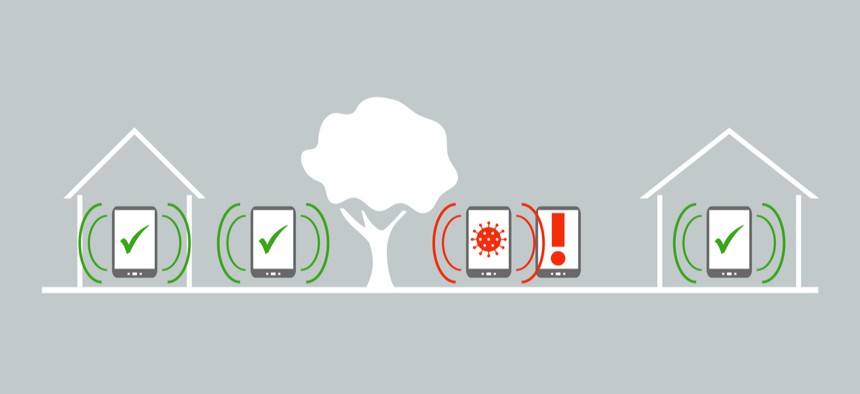How 5G Could Change Government’s Pandemic Response

keport/Shutterstock.com
The main benefit of 5G, especially for public sector applications, is the enablement of machine-to-machine communications.
Local governments are struggling to respond to the current pandemic, and many technologists believe the massive connectivity, edge compute and ultra-low latency capability of 5G could help. Many people think of 5G as the next generation of cellular network technology only. This is in part because telecom companies have been rolling out 5G test markets and touting the upgraded network’s benefits. As The New Yorker summarized, “5G … is expected to be up to a hundred times faster” than 4G.
But the technologies framed within the 5G network architecture are intended to provide capability far beyond improved speed and lower latency to your phone and streaming services. 5G will enable ultra-reliable communications and computing capabilities at the edge. Edge computing brings compute, storage and networking closer to applications, devices and users.
Pandemics and public health emergencies present a need for widespread data, monitoring and reliable wireless networking. The way to enable front-line pandemic fighters (like medical personnel and first responders) is with an upgraded network providing time-sensitive operation, a range of low to high data transmit capacity and cellular network small cell densification.
How 5G Enables Emergency Preparedness
5G and the internet of things are adding newer applications that need connectivity not just between people but between devices. The main benefit of 5G, especially for public sector applications, is the enablement of machine-to-machine communications. This means devices communicate directly with one another without any human intervention, as promised by the ever-growing internet of things. 5G also enables massive machine type computations, which lead to the low-latency computing required of real-time applications.
These advances represent the backbone of autonomous vehicles, smart cities and drones—many of which could transform how the public sector reacts to a pandemic like COVID-19 in the future.
Currently, there is much debate about when and how to “reopen” the economy—and significant variance across jurisdictions. Some health officials and technology experts have advocated for increased information sharing about people’s health and activities to help contain the potential spread of a virus.
5G network technology could support additional sensors to better track people’s health, enabling robust digital profiles that could include health statistics, where we’ve been and who we’ve been with, and body temperature, for example. With 5G, such digital profiles could be readily accessible to health care professionals and first responders leading to improved contact tracing and infection hotspot identification.
Weighing Privacy and Public Health
These same advances require renewed focus on individual privacy and data protection. 5G, artificial intelligence, and other edge technologies may give governments, businesses and health care providers the ability to share health data, to support social distancing behaviors, and to identify new hot spots, but these same advances must be designed and deployed with adequate controls for privacy and data security.
Other countries have been investing heavily in 5G as well and are working to leverage it to better track the spread of COVID-19. A new era of data collection and tracking could easily be ushered in by this pandemic, particularly with 5G networks available to support it. If another pandemic emerges, I expect the response to be far more sophisticated—and to be powered by 5G. Technology leaders and policymakers will need to determine how to protect privacy as the technology for sharing advances.
For example, 5G will create a paradigm shift in the health care industry through expanding telemedicine, fast transmission of large image files, and remote real-time diagnosis and treatment. Medical IoT devices that are consistently connected could transfer large volumes of data over 5G networks. Without adequate protection, sensitive personal information might be exposed at a scale rarely seen before.
The key will be finding the balance between the need to employ technologies like 5G to enhance health contact tracing capability and the need to protect individual data and privacy. In order to realize their fullest benefit, 5G, edge sensing and edge clouds will need to implement proper security and privacy controls to support this important balance.
Jim Brinker is president and general manager of Intel Federal.





